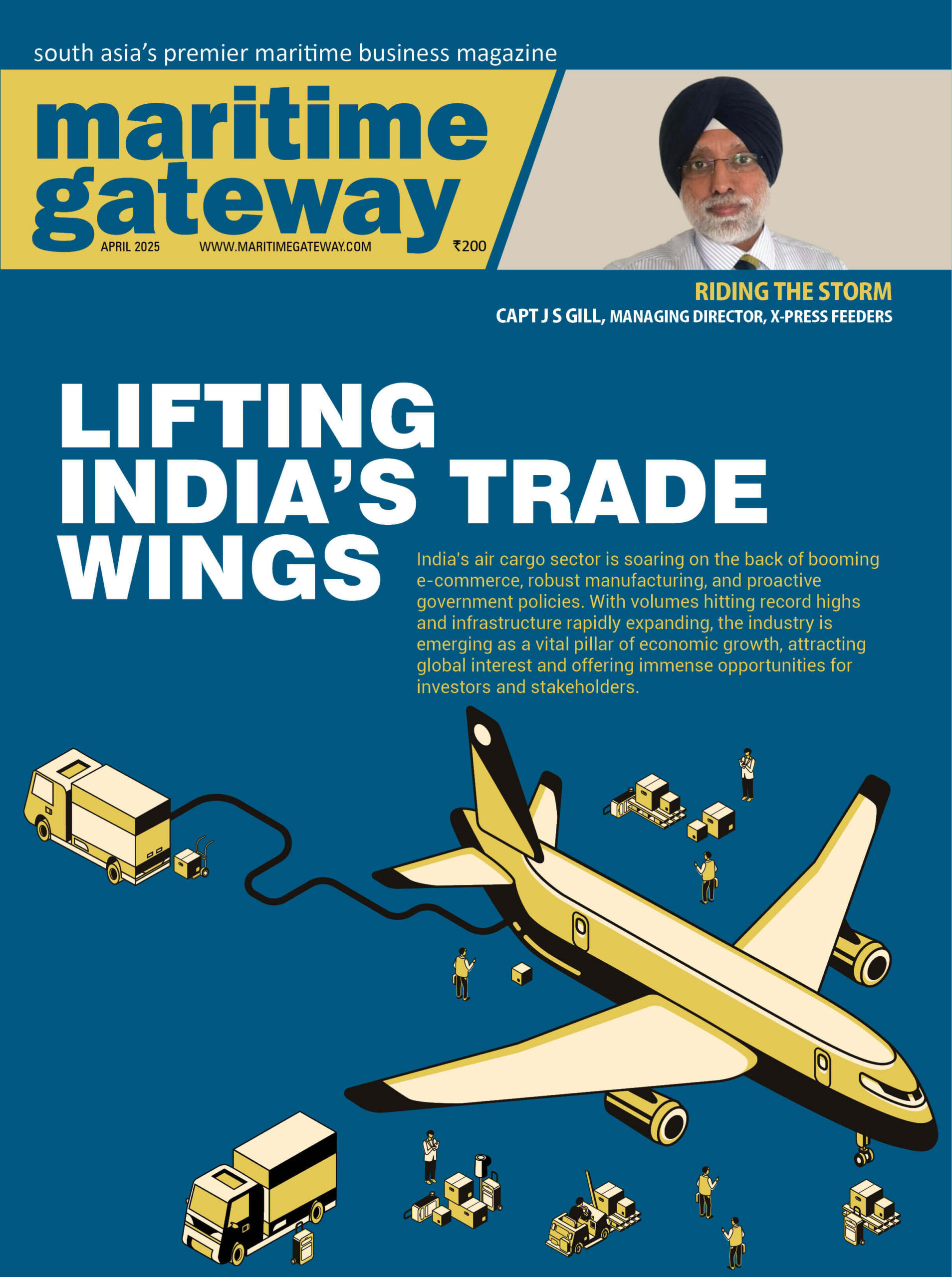By Hrishikesh Kulkarni, Chief Operating Officer, India, Cogoport
Over the last few years, phrases like ‘digital revolution’ and ‘digital transformation’, have peppered almost every industry forecast. It almost seems like digitization is the panacea for every intractable challenge a sector has ever faced. While this may be stretching the truth, digital technologies have indeed propelled industries towards achieving their potential at a much faster rate than we could have imagined 20 years ago. This is a result of Blockchain, Cloud Computing, Big Data Analytics, Internet of Things and Automation Technology coming together to reshape how industries operate. However, these digital technologies are not just reshaping individual industries, they are also changing the way economies function. In India, a prominent example is Project GatiShakti, which leverages digital technologies to connect 16 ministries for integrated planning and coordinated implementation of infrastructure connectivity projects. Among other things, the initiative seeks to use data to identify large gaps, increase transparency in order to reduce inefficiencies resulting from silos, and leverage technology for wholistic planning and better visibility in executing large infrastructure projects such as economic zones, freight corridors and Agri-zones. A faster coordinated implementation of such projects has innumerable benefits for the Indian business ecosystem.
A similar change has been brewing across the global logistics ecosystem over the last few years. In 2016, the World Economic Forum predicted that the digital transformation of the logistics sector could translate to a value of $1.5 trillion for players in the industry and an additional $2.4 trillion to society by 2025.[1] India too has benefitted and continues to benefit from the integration of digital technologies across the logistics sector. Its ranking on the World Bank’s Logistics Performance Index has improved from 44 in 2018 to 38 in 2023.[2] The use blockchain, automation, big data, etc., has had an impact on the entire logistics value chain from warehousing to shipping and transportation to last-mile delivery. For instance, IoT is being used to improve real-time tracking of goods, to monitor and detect breakdown risks, thereby helping to reduce delays and avoid accidents. Automation is being used to reduce the amount of manual intervention required, thereby speeding up process and reducing errors, which in turn is helping reduce costs. The use of drones, robots and automated vehicles is expected to improve last-mile delivery in the future. Blockchain is being leveraged to align multi-party value chains and ensure transparency across processes and actors. Moreover, the use of blockchain does away with the need for documentation at every step, reducing both time and resources involved and eliminating errors. Cloud and data digitization are being leveraged to optimize underutilized assets and increasing the availability of real-time data. Finally Big Data is being used to better understand industry trends, demand and supply fluctuations and enable improved future strategy planning.
Logistics players as well as end-consumers are reaping the benefits of these innovations in the form on increased growth, reduced cost, and faster and more efficient execution. However, there is one other segment than can greatly benefit from this digital revolution. Small and medium enterprises, often referred to as the engine of the economy are both participants in and beneficiaries of the logistics sector. More importantly logistics services play a key role in enhancing their participation in global trade and integration into global value chains, which in turn has positive ramifications for their growth. World trade is roughly 45 times the volume recorded in the 1950s ( 4500% growth), and has the potential to promote economic growth, development, and poverty reduction. However, international trade is also beset with challenges such as changing and complex regulations, information asymmetry, and unpredictable geopolitical influences. At the level of a small and medium enterprise this can translate into the lack of knowledge of customs regulations, lack of information about transportation options, limited availability of working capital to enable production for large orders, among others. The global trade finance gap has increased from an estimated $1.5 trillion in 2018 to $2 trillion in 2022. This is evidence of the large-scale challenges that characterize international trade.
Digital technologies may very well hold the key to addressing these pervasive challenges. For instance, digital trade platforms that provide a slew of services such as a comparative shipping estimates, real-time tracking of goods, as well as innovative financing options, can drastically reduce the effort and time required for small and medium enterprises to execute international orders. Technologies like blockchain can facilitate trade finance by providing a secure platform to store letters of credit, bills of lading and other documents. Moreover, AI and Machine learning can rapidly analyze vast amounts of data such as the credit histories of small and medium enterprise, market trends and supply chain information. Together these can help financial institutions assess creditworthiness and make faster decisions. Moreover, such analytics can also help financial institutions better assess risks, allowing trade finance to become available to a broader range of businesses. The overall optimization of logistics is also expected to reduce costs and thereby lower the barrier of entry for small and medium enterprises to participate in international trade. Digital technologies therefore have the potential to reduce costs, improve transparency, optimize processes and as a result spur the transformation of the Indian logistics ecosystem. However, it is important to note that this transformation cannot occur in a vacuum and requires the collaboration by ecosystem actors as well as supportive policies and regulations.
[1] World Economic Forum (2016), ‘Digital Transformation of Industries: Logistics Industry’
[2] https://lpi.worldbank.org/international/global








